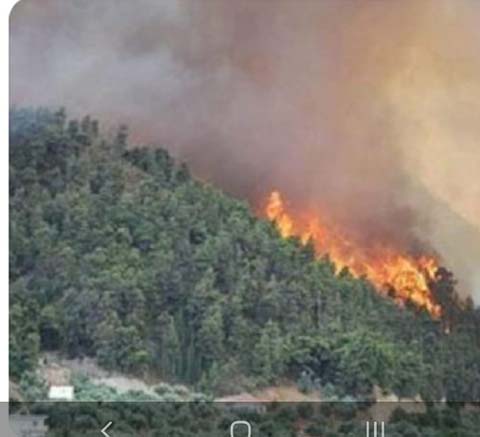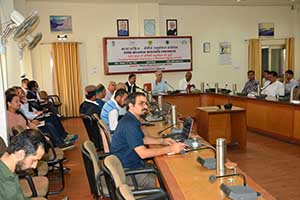SHIMLA: Forest experts say that clones of species of agroforestry can be a game changer to bring the targeted 33 per cent of area under forest and leveraging farmers' income in due course of time mainly in northern India.
India is home to 17 % of world human population and 16% of cattle population. But it has world’s 2.4 per cent of land area and has world's less than 4% of forest area.
Soon the farmers will have access to clones of different species of agroforestry that will benefit them in a big way, said A S Rawat, Director General, Indian Council of Forestry Research and Education (ICFRE), Dehradun.
ICFRE is developing clones of important agroforestry species, said Rawat while presiding over the joint regional research conference in a hybrid mode.
The conference was held on the theme, “Forestry Research and Issues in Northern Region of India organized by Himalayan Forest Research Institute(HFRI), Shimla and Forest Research(FRI), Dehradun ” here.
Dr Rawat said traditional agroforestry is being practiced for long. However, there is need to have scientific inputs in agroforestry so that its productivity can be enhanced, he added.
“ICFRE is working continuously to develop technologies, which will ultimately benefit farmers”.
He said role of agroforestry in meeting the goal of 33% percent geographical area under forest is very crucial. “The gaps in the field of agroforestry need to be identified and fulfilled through scientific ways”, he added.
Agroforestry not only helps in ecology and environment improvement, but also boosts the income of farming communities, said Dr Rawat.
“There is a need of support from state forest departments to enhance the research work in the field of agroforestry”, he observed.
Ajay Srivastava, chief of Himachal Pradesh State Forest Department said research and monitoring are important aspects of forestry management.
“There is need to give more emphasis on research areas like restoration ecology, forest fires”, he said.
Jagdish Chander, Forest chief, Haryana said they must do scientific harvest of timer to generate revenue.
“Agroforestry and clonal technology can play huge role in meeting the demand of timber, fuelwood and other forestry services”.
Chander informed that India has 17 % of world human population and 16% of cattle population of the world and however, the country has less than 4% of forest area of the world.
“Agroforestry and clonal technology can bridge this gap”, Chander said.
He said there are more than 45000 species of plants, but research is on very less species. Therefore, research needs to be explored on more species, he said.
He said institutes need to protect and conserve forestry species outside its natural habitats as well to promote in-setu conservation.
“Research must be focused on keeping sustainable development goal in the view”, he said.
HFRI's director incharge, Dr. Sandeep Sharma informed the needs of forestry research of state forest department and other stakeholders would be addressed in the conference.
"The issues and problems faced in agroforestry and clonal technologies are discussed to arrive at a plausible strategy".
K. Dogra, Deputy Director General (Research), ICFRE, said the institute’s research focuses on biodiversity conservation, genetic resource management, climate change, land degradation, desertification, and natural forest resource management.
“ICFRE also carry out research keeping in the view the objectives of National Forest Policy, 1988”, he added.
ICFRE’s Vimal Kothiyal, ADG (Research & Planning), Directors of HFRI and FRI presented an overview of research of both institutes respectively.
The forest chiefs and directors of the research institutes of northern states gave their presentation on their respective states and union territories ranging from Ladakh and Jammu and Kashmir to UP, Uttarakhand, Punjab Haryana and Himachal Pradesh during the technical sessions.
They highlighted the different research interventions under various AICRPs, MoUs signed, DPRs on rejuvenation of Indus Basin and Yamuna rivers and other extension and research achievements of their respective institutes.
The mega conference has brought all northern states and UTs including NGOs, representatives of the forest-based industries, progressive farmers, tribal youth on board in their bid to achieve the 33 per cent target.
But how much these rejuvenation projects and conferences are helping or will help increase forest cover and promote clonal technology, is yet to be reflected on the ground, though Himachal as per Forest Survey of India report, claims that it has increased its green cover in 2019-20.




